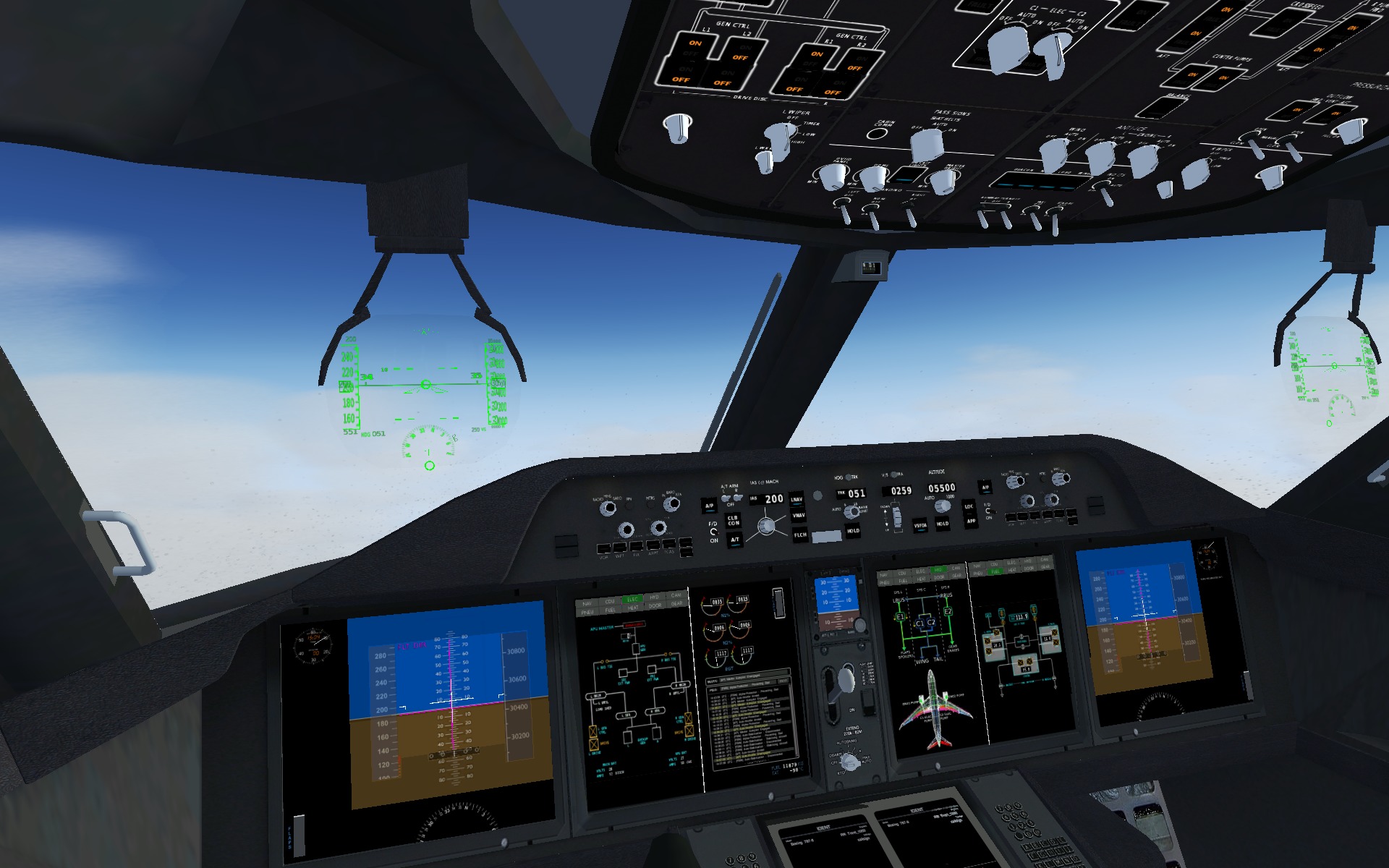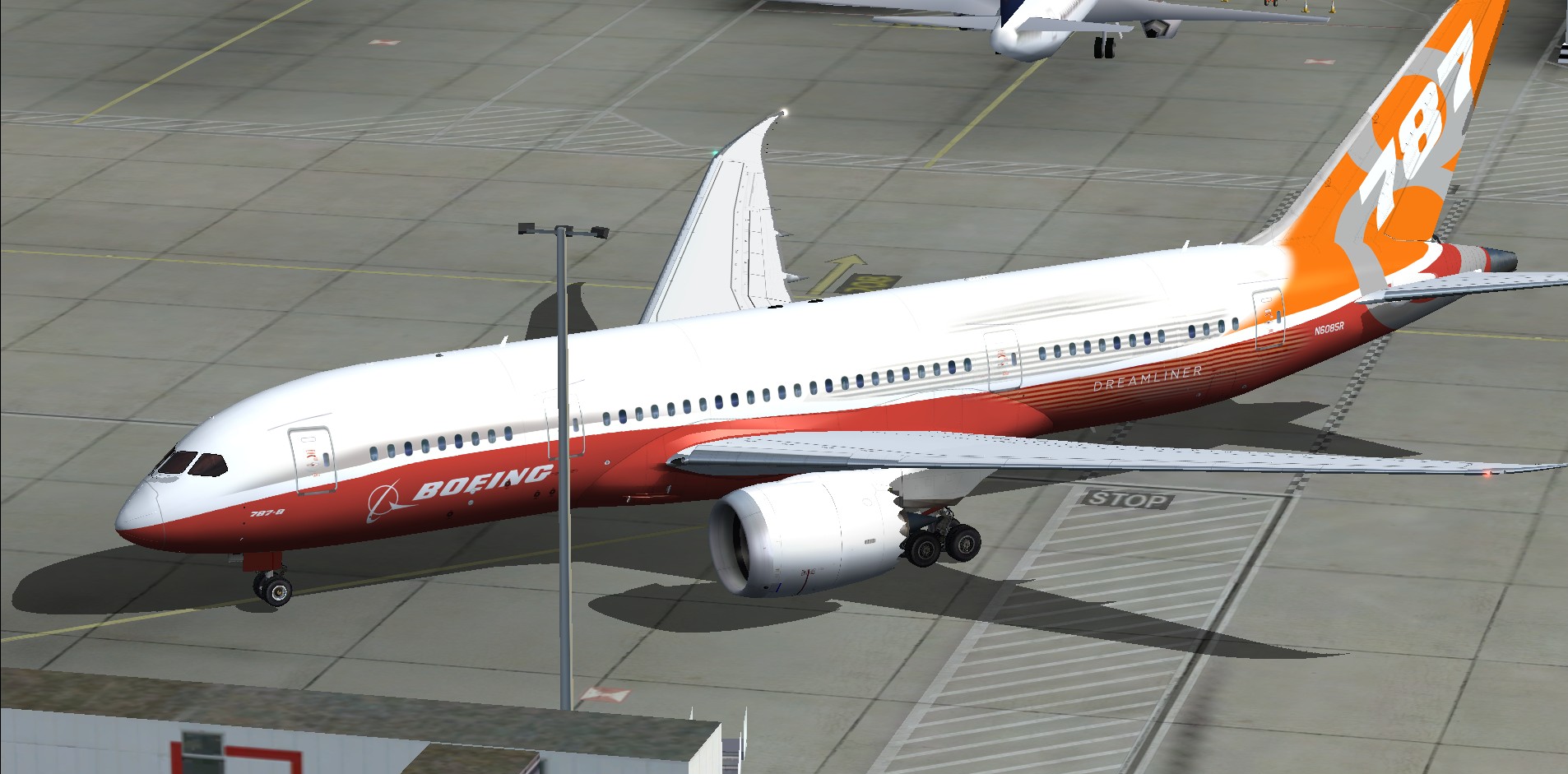

As mentioned before, the computer is only as good as the information which we give it.ĭuring the flight, the FMC gives us a whole range of information on the flight, from estimated time of arrival at points en route, to expected fuel on arrival at the destination. We then meticulously check this route against the paper flight plan we printed during the briefing.
#Flightgear 787 download
During the preflight set up, we download the planned route from the company's server. Flight Management ComputerĪlready mentioned above, the FMC is the brains of the flight. Turn the wheel/stick to the left, the left wing drops and the right wing rises - a roll to the left. Push the stick forward, the nose goes down. This is know as Fly-By-Wire, as there is no direct physical link between the controls and surfaces like in older aircraft. The elevators on the horizontal stabilizer under the tail, and the ailerons on the wings. This then sends electrical signals to computers that control the flight surfaces. Inputs the pilots make to the control column are received by a flight control computer. The control column sits between the pilot's legs. This is all done through the buttons and switches on the glare shield panel. We have to instruct the autopilot what altitude to climb or descend to, what speed to fly and whether to follow the planned route or fly a different one. It's what you told it to do, but it means nothing. If you just hold down the 'h' key, your laptop will write 'hhhhhhhhhhhhhhhhh' beautifully across the screen. It's only as good as the information the pilots give it - very much like writing an email. Once the autopilot has been engaged, most of the controlling of the aircraft comes via this panel.Ĭontrary to common belief, the autopilot does not do all the work. The panel that we use most during the flight is conveniently placed right in the middle of the flight deck, allowing for easy access by both pilots. This gives us greater situational awareness as to how the decent is going and also shows us where any terrain is relative to our altitude. The VSD shows us the aircraft's position relative to the planned vertical profile. This approach has a tight turn late on to keep noise to a minimum for those living around the airport.
#Flightgear 787 simulator
The video below shows a simulator landing at runway 13L at New York's JFK Airport. The HUD enables us to do all these tasks together - look out of the windshield at the runway without having to momentarily look inside to scan the flight parameters. This is very often done whilst in cloud, expecting to see the runway at any moment. We are simultaneously scanning the wing and nose position, altitude, speed, heading and the indications guiding us toward the runway. At these late stages of flight, we are working our hardest. Whilst it's great during takeoff, it really comes into its own when on approach. The brightness of this display can be controlled manually to suit the outside lighting conditions.

This is then projected onto the combiner glass in front of the pilot's face, which then displays the PFD image. The image on the HUD is created by a projector that sits just above the pilot's head.


By displaying the information from the PFD, the HUD enables us to monitor all the flight parameters whilst simultaneously looking out of the windshield. In other aircraft types, pilots fly by constantly switching their attention between the screens inside and the view outside. The defining feature of the 787 flight deck, the Head Up Display (HUD), is military technology in civilian clothing. This is the current pressure on the ground and indicates the altitude of the aircraft - its heigh above sea level. Below the altitude indication is the pressure setting, here at 1023 HPA. On the ground here, it shows the aircraft at 100 feet above sea level. The next magenta number is the selected altitude - the one at which the autopilot will stop at unless told otherwise.īelow the selected altitude is the altimeter scale, which shows how high the aircraft is. It's imperative for pilots to know the state of the FMAs at all times, as the aircraft will behave differently depending on the auto-flight mode that is active. As there are a number of different ways of flying the aircraft depending on what the priority is (speed, altitude profile, lateral guidance, etc), the FMAs tell us which auto-flight mode is active. In magenta is the speed selected in the glare-shield panel (more on this later) and then across the top are the Flight Mode Annunciations - FMAs. On the ground, it has a minimum value of 30kts. Moving to the left and in a clockwise direction is the airspeed indicator, indicating how fast the wind is moving over the wings, measured in knots. On the ground, as you would imagine, they are level. Starting in the center, the two L shapes on their side represent the wings.


 0 kommentar(er)
0 kommentar(er)
